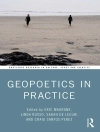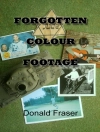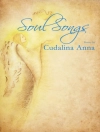The Waste Land is a poem by T. S. Eliot, widely regarded as one of the most important poems of the 20th century and a central work of modernist poetry. Published in 1922, the 434-line poem first appeared in the United Kingdom in the October issue of Eliot’s The Criterion and in the United States in the November issue of The Dial. It was published in book form in December 1922. Among its famous phrases are ‘April is the cruellest month’, ‘I will show you fear in a handful of dust’, and the mantra in the Sanskrit language ‘Shantih shantih shantih’.
Eliot’s poem loosely follows the legend of the Holy Grail and the Fisher King combined with vignettes of contemporary British society. Eliot employs many literary and cultural allusions from the Western canon, Buddhism and the Hindu Upanishads. The poem shifts between voices of satire and prophecy featuring abrupt and unannounced changes of speaker, location, and time and conjuring a vast and dissonant range of cultures and literatures.
The poem’s structure is divided into five sections. The first section, ‘The Burial of the Dead, ‘ introduces the diverse themes of disillusionment and despair. The second, ‘A Game of Chess, ‘ employs vignettes of several characters—alternating narrations—that address those themes experientially. ‘The Fire Sermon, ‘ the third section, offers a philosophical meditation in relation to the imagery of death and views of self-denial in juxtaposition influenced by Augustine of Hippo and eastern religions. After a fourth section, ‘Death by Water, ‘ which includes a brief lyrical petition, the culminating fifth section, ‘What the Thunder Said, ‘ concludes with an image of judgment.
The poem is preceded by a Latin and Greek epigraph from The Satyricon of Petronius. In English, it reads: ‘I saw with my own eyes the Sibyl of Cumae hanging in a jar, and when the boys said, Sibyl, what do you want? she replied I want to die.’
The style of the poem is marked by the hundreds of allusions and quotations from other texts (classic and obscure; ‘highbrow’ and ‘lowbrow’) that Eliot peppered throughout the poem. In addition to the many ‘highbrow’ references and/or quotes from poets like Baudelaire, Shakespeare, Ovid, and Homer, as well as Wagner’s libretti, Eliot also included several references to ‘lowbrow’ genres. A good example of this is Eliot’s quote from the 1912 popular song ‘The Shakespearian Rag’ by lyricists Herman Ruby and Gene Buck.[28] There were also a number of lowbrow references in the opening section of Eliot’s original manuscript (when the poem was entitled ‘He Do The Police in Different Voices’), but they were removed from the final draft after Eliot cut this original opening section.
The style of the work in part grows out of Eliot’s interest in exploring the possibilities of dramatic monologue. This interest dates back at least as far as ‘The Love Song of J. Alfred Prufrock’. The Waste Land is not a single monologue like ‘Prufrock’. Instead, it is made up of a wide variety of voices (sometimes in monologue, dialogue, or with more than two characters speaking).
The Waste Land is notable for its seemingly disjointed structure, indicative of the Modernist style of James Joyce’s Ulysses (which Eliot cited as an influence and which he read the same year that he was writing The Waste Land). In the Modernist style, Eliot jumps from one voice or image to another without clearly delineating these shifts for the reader. He also includes phrases from multiple foreign languages (Latin, Greek, Italian, German, French and Sanskrit), indicative of Pound’s influence.
T. S. Eliot
The Waste Land [PDF ebook]
The Waste Land [PDF ebook]
Bu e-kitabı satın alın ve 1 tane daha ÜCRETSİZ kazanın!
Dil İngilizce ● Biçim PDF ● ISBN 9788832563597 ● Dosya boyutu 0.2 MB ● Yayımcı iOnlineShopping.com ● Yayınlanan 2019 ● İndirilebilir 24 aylar ● Döviz EUR ● Kimlik 6943639 ● Kopya koruma olmadan












